If you really dont want to see even Mathieu's This you could wrap it into a function. This is a bit more involved, and can be achieved using
- a second class that stores the data in public variables. This will be marginally slower then Mattieu's implementation
- a collection object that accesses the data using keys. This does not require additional clutter in the project exporer's 'class module' list but will be a little slower if you call the This repeatedly in fast sucession
An example for each is given below. If you break in the Class's Initialisation function, you can add me to the watch window and only the Name property will be listed
Using 2 Objects example
insert a classmodule and name it: InvisibleObjData
Option Explicit
Public Name As String
Public plop
Private Sub Class_Initialize()
Name = "new"
plop = 0
End Sub
insert a classmodule and name it: InvisibleObj
Option Explicit
Private Function This() As InvisibleObjData
Static p As New InvisibleObjData 'static ensures the data object persists at successive calls
Set This = p
End Function
Private Sub Class_Initialize()
This.Name = "invisible man": Debug.Print Name
Me.Name = "test": Debug.Print Name
This.plop = 111: Debug.Print This.plop
End Sub
Property Let Name(aname As String): This.Name = aname: End Property
Property Get Name() As String: Name = This.Name: End Property
'_______________________________________________________________________________________
' in the immediate window type
'
' set x=new invisibleObj
If you dont like splitting the class over two objects, a similar behaviour can be generated using a 'wrapped' collection object:
insert a classmodule and name it: InvisibleCol
Option Explicit
Private Function This() As Collection
Static p As New Collection
'static ensures the collection object persists at successive calls
'different instances will have different collections
'note a better dictionary object may help
Set This = p
End Function
Private Function add2this(s, v)
'a better dictionary object instead of the collection would help...
On Error Resume Next
This.Remove s
This.Add v, s
End Function
Private Sub Class_Initialize()
add2this "name", "invisible man": Debug.Print Name
Me.Name = "test": Debug.Print Name
add2this "plop", 111
Debug.Print This("plop") ' use the key to access your data
Debug.Print This!plop * 2 ' use of the BANG operator to reduce the number of dbl quotes
' Note: This!plop is the same as This("plop")
End Sub
Property Let Name(aname As String): add2this "name", aname: End Property
Property Get Name() As String: Name = This!Name: End Property
'_______________________________________________________________________________________
' in the immediate window type
'
' set x=new invisibleCol


